Introduction to Unmanned Aerial Vehicles
Unmanned aerial vehicles (UAVs) have revolutionized the way wars are fought and have become a game-changer in the modern military.
These aerial machines, also known as drones, are unmanned and can be remotely controlled or flown autonomously. They are used for various purposes, such as surveillance, reconnaissance, targeting, and combat operations.
UAVs have proven to be highly effective in reducing the risks to human pilots and can be deployed in a variety of environments, including hostile or hazardous areas.
UAV technology has rapidly advanced, and its use has become more widespread across a variety of industries.
The future of Unmanned aerial vehicles UAVs in the defense industry is promising due to ongoing technological advancements in UAV technology.
With improvements in power systems, sensors, communication systems, and artificial intelligence (AI), the possibilities for future UAV technology applications are endless.

In this blog, we will explore the future of the global unmanned aerial vehicle in the defense industry.
Including the types of UAVs currently in use, their advantages over manned aircraft, and the technological advancements that are driving their development.
We will also discuss the potential risks and challenges that may arise with the increasing use of UAVs in the military as the military unmanned aerial vehicles.
By the end of this blog, you will have a better understanding of the potential impact of UAVs on the future of warfare and the defense industry as a whole.
Unmanned Aerial Vehicle (UAV)
An unmanned combat aerial vehicle (UCAV), is also known as a combat drone, and colloquially shortened as drone or battlefield UAV technology.
It is an unmanned aerial vehicle (UAV) that is used for intelligence, surveillance, target acquisition, and reconnaissance and carries unmanned aircraft system ordnance such as missiles, ATGMs, and/or bombs in hardpoints for military drone strikes.
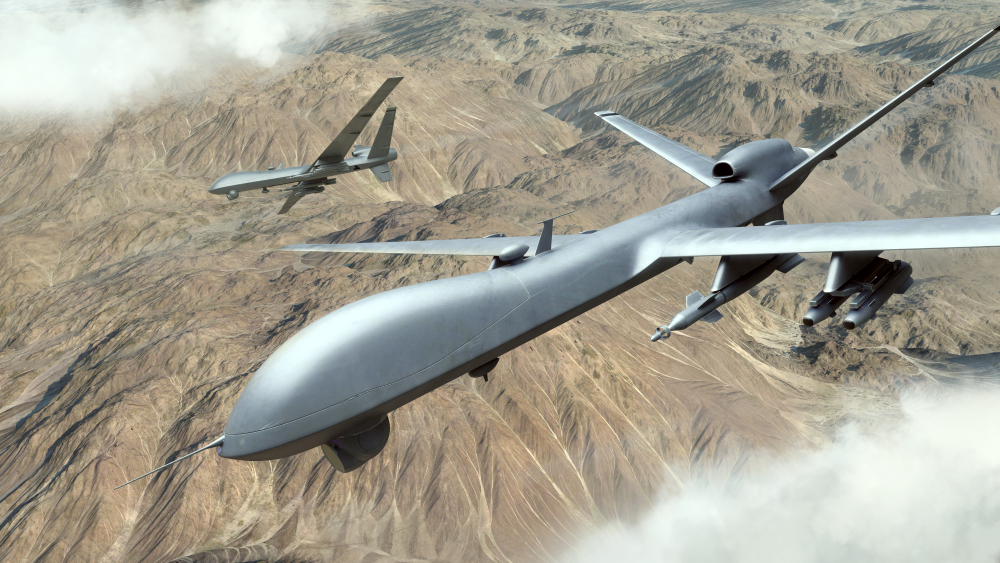
Historical background of Unmanned Aerial Vehicles UAVs
1783 – The First UAV
 Hot-air balloons are often not mentioned when discussing UAVs.
Hot-air balloons are often not mentioned when discussing UAVs.
These airplanes were the first in terms of technology to fly without a human pilot. The first public display of unmanned aircraft systems, a hot air balloon, was presented by Joseph-Michel and Jacques-Étienne Montgolfier in Annonay, France.
1849 – The First Military Use of UAVs
 Austrian artillery lieutenant Franz von Uchatius invents the balloon bomb.
Austrian artillery lieutenant Franz von Uchatius invents the balloon bomb.
Field Marshall von Radetsky used the balloons to attack Venice, but they were mostly ineffective.
1858 – First Aerial Photograph

Gasper Felix Tournachon takes the first aerial photograph from a hot-air balloon in Paris, France.
Unfortunately, the photograph has been lost in history.
1896 – First Camera on a UAV
 The dynamite inventor Alfred Nobel launches a rocket with a camera on board.
The dynamite inventor Alfred Nobel launches a rocket with a camera on board.
For the first time, cameras were mounted to an unmanned system as part of Nobel’s experiment.
1898 – The First Radio-Controlled Craft
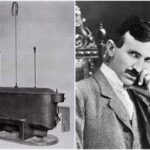 In Madison Square Garden, Nikola Tesla shows off his radio-controlled boat to an audience.
In Madison Square Garden, Nikola Tesla shows off his radio-controlled boat to an audience.
The craft could flash its lights and respond to Tesla’s directing signals. Some spectators believed Tesla was a magician or possessed telekinetic abilities. Others thought the tiny boat had a trained monkey.
It was a striking example of what radio-controlled aircraft will eventually become.
1915 – British Use of Aerial Reconnaissance Photos
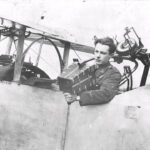 British soldiers utilized aerial photography to create a map of the German front during the Battle of Neuve Chapelle.
British soldiers utilized aerial photography to create a map of the German front during the Battle of Neuve Chapelle.
In one of the earliest examples of an orthomosaic, the photos were arranged one on top of the other.
1917 – First Unmanned Aerial Vehicle Torpedo the Kettering Bug
 The unmanned Kettering Aerial Torpedo, often known as the “Bug” in Ohio, was developed by Charles Kettering.
The unmanned Kettering Aerial Torpedo, often known as the “Bug” in Ohio, was developed by Charles Kettering.
The Bug’s internal pneumatic and electrical controls were pre-set and employed to stabilize the vehicle. The motor would shut off, the wings would separate, and the Bug would fall to the ground at a predetermined distance. It carried 180 pounds of explosives.
1935 – The First Modern Drone Manufacturers are Developed
 To train pilots efficiently, the UK needed to establish the Royal Air Force in 1918.
To train pilots efficiently, the UK needed to establish the Royal Air Force in 1918.
Gliders were frequently towed behind crewed aircraft for target practice. That approach did not, however, succeed in simulating actual warfare with adversarial combatants.
In response, a cheap radio-controlled drone technology made for aerial target practice was employed in the De Havilland DH.82B Queen Bee aircraft.
Many people believe it to be the original modern drone technology.
1936 – United States Drone Program Begins
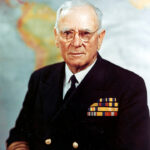 In 1936, American Admiral William Harrison Standley saw a test flight of the Queen Bee.
In 1936, American Admiral William Harrison Standley saw a test flight of the Queen Bee.
Fahrney is thought to have referred to the United States platform as a “drone” as a nod to the UK’s Queen Bee.
1937 – U.S. Navy Develops a Radio-Controlled UAV Torpedo
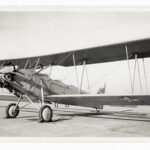 The Curtiss N2C-2 was the first radio-controlled UAV industry.
The Curtiss N2C-2 was the first radio-controlled UAV industry.
An operator inside a crewed manned aircraft that followed the Curtiss gave directions to the N2C-2.
Despite the efficacy of the Unmanned systems being constrained, this was an important advancement in radio-controlled UAV technology.
1941 – Actor Reginald Denny invents the Radio Plane
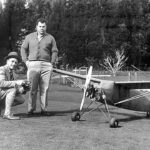 A radio-controlled target plane, the Radio Plane.
A radio-controlled target plane, the Radio Plane.
After starting his business, Denny created target drones for the military and invented lots of armed drone-related technology. Nearly 70,000 target drones for the US Army had been made by Denny’s company by the time the Northrop Grumman Corporation acquired it in 1952.
1943 – The Beginnings of First-Person View (FPV) Flight
 The BQ-7, which utilized an unrefined FPV technology, was created by Boeing and the United States air force.
The BQ-7, which utilized an unrefined FPV technology, was created by Boeing and the United States air force.
Effectively, non-essential equipment was removed from old bombers and explosives were added. The aircraft would be piloted by a person in the direction of the intended target.
The autopilot was switched on as soon as the target came into view, and the pilot bailed out of the unmanned aircraft. The BQ-7 would then take off alone and fly to the objective.
The BQ-7 was essentially useless in combat, and pilots who were ejected had a high mortality or capture rate.
1973 – Israel Develops UAVs for Surveillance and Scouting
 The Mastiff and the IAA Scout series of UAVs represented a leap in the capabilities of drones.
The Mastiff and the IAA Scout series of UAVs represented a leap in the capabilities of drones.
Military commanders were able to increase their situational awareness with these platforms significantly.
1982 – Battlefield UAVs
 The outcome of the engagement was significantly changed by drones for the first time in the Battle of Jezzine.
The outcome of the engagement was significantly changed by drones for the first time in the Battle of Jezzine.
By outsmarting the Syrian air force and using drones, Israel was able to win the fight with little losses. The viability of UAVs in combat was proven.
1985 – US Significantly Scales Up Drone Production
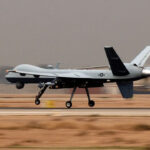 The US was poised to expand its drone program by the end of the Vietnam War.
The US was poised to expand its drone program by the end of the Vietnam War.
It was evident from Israel’s UAV program’s early 1980s accomplishments that drones would play a bigger part in future battles.
1986 – The RQ2 Pioneer Drone is Developed
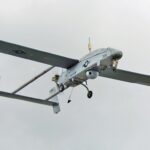 Israel and the United States collaborate to create one of the most successful UAV platforms ever.
Israel and the United States collaborate to create one of the most successful UAV platforms ever.
The system had a much-improved payload and was an updated IAI Scout military drone. Some Iraqi forces even submitted to a Pioneer UAV during the Gulf War.
1991 – UAVs Fly 24/7 During the Gulf War
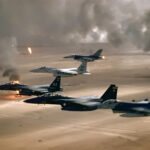 For the first time in a major conflict, at least one drone was airborne from the conflict’s start until its conclusion.
For the first time in a major conflict, at least one drone was airborne from the conflict’s start until its conclusion.
1996 – The Predator Drone is Developed
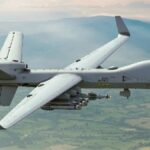 With the help of UAV giants like Abraham Karem, the U.S. develops the Predator drone.
With the help of UAV giants like Abraham Karem, the U.S. develops the Predator drone.
This platform brought weaponized drones to the battlefield like never before.
Probably more than any other UAV, the Predator created the public image of drones striking targets around the world.
2006 – UAVs Permitted in US Civilian Airspace for the First Time
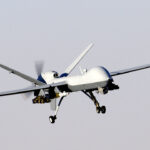 Following Hurricane Katrina’s damage, the FAA approved the use of unmanned aerial vehicles (UAVs) for search and rescue and disaster relief operations in the civilian air force.
Following Hurricane Katrina’s damage, the FAA approved the use of unmanned aerial vehicles (UAVs) for search and rescue and disaster relief operations in the civilian air force.
The heat fingerprints of people could be detected by Predator drones equipped with thermal cameras up to 10,000 feet away. The consumer drone market started to take shape around this period.
Companies like Parrot, DJI, 3DR, and many more were looking to take military unmanned aerial vehicle technology and reuse it before DJI became the market leader it is today. Many companies invested in the technology due to the promise of the consumer and industrial UAV sectors.
2010 – Parrot Controls a Drone with a Smartphone
 At CES, French drone manufacturer Parrot unveiled its AR Drone.
At CES, French drone manufacturer Parrot unveiled its AR Drone.
The UAV was a small quadcopter fit for consumer use. An app on a smartphone was all the pilot needed to operate the drone safely.
2013 – DJI Produces the First Phantom Drone
 Although the business was established in 2006, the renowned Phantom series wasn’t made public until 2013.
Although the business was established in 2006, the renowned Phantom series wasn’t made public until 2013.
The present military drone mania with cameras got its start with this drone. Within a short period, DJI would gain a dominant position in the consumer drone market, with nearly 80% of commercially available drones coming from the company or one of its subsidiaries.
2013 – Major Companies Look to Start Drone Delivery
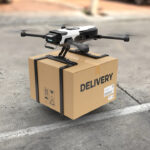 FedEx, UPS, Amazon, Google, Uber, and countless other delivery companies recognize drone benefits as a delivery platform.
FedEx, UPS, Amazon, Google, Uber, and countless other delivery companies recognize drone benefits as a delivery platform.
Testing of various UAV concepts and work with regulatory agencies around the world begins.
2014 – The Use of Drones Rapidly Grows in Industry and with Consumers
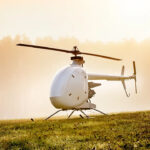 Since 2014, UAVs have continued to expand in capabilities and use cases.
Since 2014, UAVs have continued to expand in capabilities and use cases.
As more industries explore how drones can make their work safer and more cost-effective, growth is expected to rapidly surge in the coming years. By 2030, the entire UAV market is set to be worth $92 billion.
2020 – Pandemic Alleviation
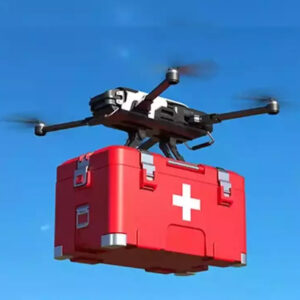 Drones have been a mainstay during the coronavirus pandemic, helping with everything from mass disinfection and medical supply delivery support to the enforcement of quarantine and social distancing.
Drones have been a mainstay during the coronavirus pandemic, helping with everything from mass disinfection and medical supply delivery support to the enforcement of quarantine and social distancing.
Regulations are being changed more often than ever before to offer fast-track authorizations for potential use cases.
One thing is obvious, however: the pandemic has helped nations all over the world envision the potential that drones offer for society. It is impossible to predict the long-term effects of these advances.
Types of Unmanned Aerial Vehicles
Unmanned aerial vehicles can be classified into different types based on their aerodynamic features.
The four major types are multi-rotor, fixed-wing, single-rotor, and hybrid vertical take-off and landing (VTOL).
Multi-rotor UAVs
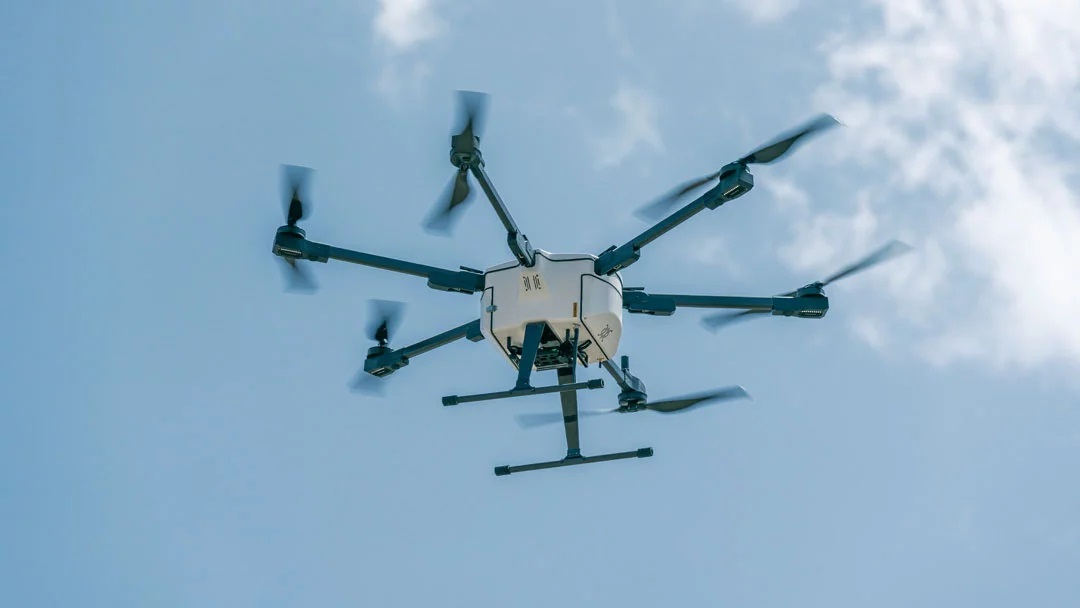
These are the UAVs that both pros and amateurs utilize the most.
They are commonly utilized for recreational activities, aerial photography, and mapping.
These UAVs are currently the least expensive selection on the market.
According to the number of rotors on the UAV, they can be further divided into four different types: quadrocopters (four rotors), hexacopters (six rotors), and octocopters (eight rotors).
In general, the number of rotors a UAV has improves the amount of payload it can carry.
Multi-rotor UAVs are the least expensive choice, but they have drawbacks as well.
When compared to other UAV kinds, they have a shorter flying time and worse endurance.
This is because multi-rotor UAVs require a lot of energy to maintain their stability in the air in the face of gravity and wind.
Multi-rotor UAVs typically have a flying time of between 20 and 40 minutes.
Fixed-wing UAVs
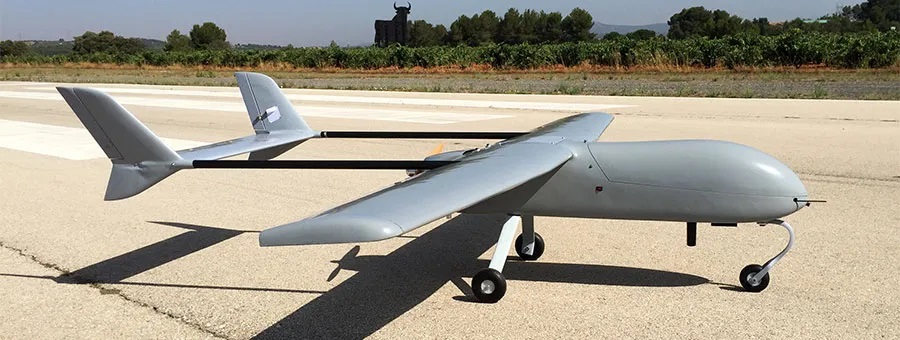
These UAVs are constructed similarly to common airplanes.
In contrast to multi-rotor UAVs, they utilize the aerodynamic lift offered by their construction, therefore they don’t need as much energy to maintain flight.
As a result, they have a longer flight time than multi-rotor UAVs. For fixed-wing UAVs, the typical flying period might be between one and two hours.
These UAVs’ tendency to require a lot of area for takeoff and landing is a drawback.
In addition to lacking the capacity to hover, they are regarded as being more complicated and challenging to fly; they typically demand extensive training.
Additionally, these UAVs are often more expensive than multi-rotor UAVs.
Single-rotor UAVs

These UAVs have a design and construction that are very similar to helicopters.
To control their direction, they typically have a large rotor on top and a small rotor on the tail.
These UAVs can fly for a longer period than multi-rotor UAVs because they are often powered by gas engines.
The drawback of these UAVs is the operational risks associated with their big rotors.
Additionally, it takes a lot of training to fly them.
Although they frequently cost even more than fixed-wing UAVs, they are capable of carrying bigger payloads.
Hybrid VTOL UAVs
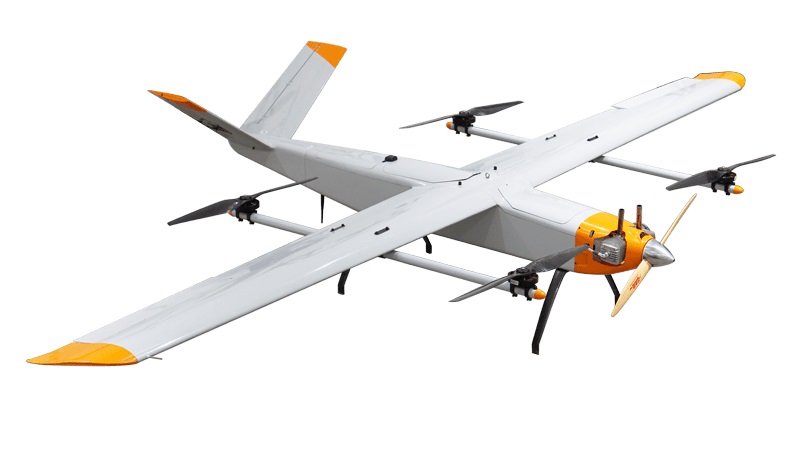
These UAVs combine the advantages of fixed-wing and multi-rotor UAVs with the capacity for vertical takeoff and landing.
There are currently relatively few options on the market for these UAVs, which are still in the early stages of development.
Although they can carry heavier payloads and have a long flight period, they still need to have their effectiveness put to the test.
Unmanned Aerial Vehicles UAVs usage in current military operations
Unmanned Aerial Vehicles (UAVs), also known as drones, have become increasingly important in current military drone operations.
They offer a range of capabilities that can enhance situational awareness, intelligence gathering, and precision strike operations.
Some of the key ways in which UAVs are being used in current military UAV operations include,
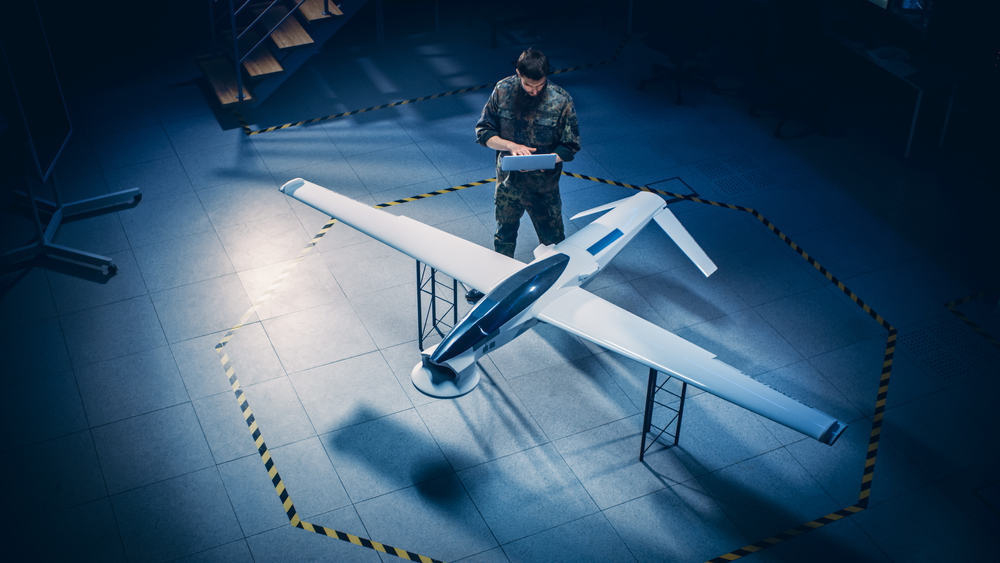
- Surveillance and Reconnaissance: UAVs equipped with cameras and sensors are used to conduct surveillance and reconnaissance missions, providing real-time intelligence on enemy positions, movements, and activities.
- Targeting: UAVs are used to identify and track targets, providing precise information to guide airstrikes or other offensive operations.
- Communication Relay: UAVs can act as communication relays, providing a secure and reliable link between ground troops, command centers, and other assets.
- Search and Rescue: UAVs can be used to search for and locate downed pilots or other personnel in need of rescue.
- Cargo Delivery: UAVs can be used to deliver supplies and equipment to troops in remote or inaccessible locations.
- Psychological Operations: UAVs can be used to disseminate propaganda and other messaging to enemy forces or civilians.
Overall, UAVs have proven to be a valuable asset in modern military operations, offering enhanced capabilities and reduced risk to personnel.
Future of UAVs in the defense industry
The future of UAVs in the defense industry is bright, and they are expected to play an even more critical role in military operations in the future.
Some of the anticipated developments in the field of UAVs include

- Autonomous UAVs: The development of autonomous UAVs that can operate without human intervention is expected to revolutionize the defense industry.
These UAVs will be able to perform a wide range of tasks, including surveillance, reconnaissance, and even combat operations, without the need for human operators.
- Swarm UAVs: The development of swarm UAVs is also expected to have a significant impact on the defense industry. These UAVs will operate in a coordinated manner to perform a wide range of tasks, such as surveillance, reconnaissance, and target acquisition. Swarm UAVs are also expected to be used in combat operations, where they can overwhelm enemy defenses and provide real-time situational awareness for military commanders.
- Stealth UAVs: The development of stealth UAVs is another area of focus in the defense industry. These UAVs will be designed to be invisible to radar and other detection systems, making them highly effective in combat operations. Stealth UAVs will also be able to conduct surveillance and reconnaissance missions without being detected, providing critical information to military commanders.
- Enhanced Payloads: The development of enhanced payloads for UAVs is expected to increase their versatility and utility in military operations. Payloads such as sensors, cameras, and weapons can be added to Unmanned aerial vehicles, enabling them to perform a wide range of tasks and operations.
Conclusion
The use of UAVs in the defense industry has revolutionized military operations, and their importance is expected to increase in the future.
The development of autonomous UAVs, swarm UAVs, stealth UAVs, and enhanced payloads is expected to further enhance the capabilities of UAVs in the defense sector.
As such, the future of UAVs in the defense industry is promising, and they are expected to play an even more critical role in military operations in the future.








